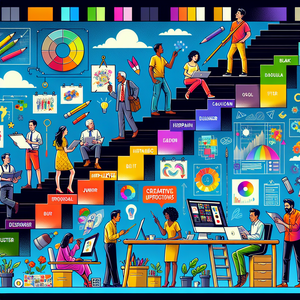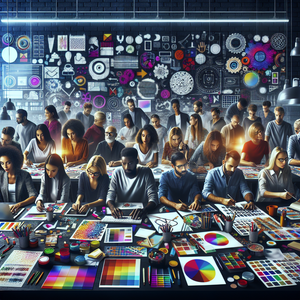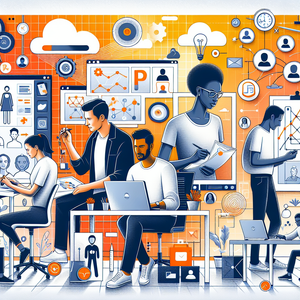
Climbing the Graphic Design Career Ladder: Roles, Responsibilities, and Pathways
The graphic design industry is a vibrant and evolving field, offering a wide range of career opportunities that are often organized in a clear hierarchy. This structure typically begins with entry-level positions, such as Junior Graphic Designer, and progresses through Mid-Level roles, Senior positions, and ultimately leads to leadership roles like Art Director and Creative Director. Each of these roles has its own set of responsibilities and skill requirements, all of which play a critical part in the creative process.
Job Summaries:
Junior Graphic Designer:
- Assist senior designers in the creation of visual content for various projects
- Work on advertisements and branding materials
- Entry-level role
- Typically requires a bachelor's degree in graphic design
- Familiarity with design software like Adobe Creative Suite
Graphic Designer:
- Develop visual concepts that effectively communicate ideas to engage or inform audiences.
- A strong portfolio and a degree in graphic design are essential.
- Enjoy greater independence in crafting layouts and selecting typography.
Senior Graphic Designer:
- Senior Graphic Designers are responsible for leading projects from start to finish.
- Mentoring junior team members while collaborating with other departments.
- Typically requiring 5-8 years of experience.
- This role demands strong leadership capabilities.
- A comprehensive understanding of design principles is necessary.
Graphic Design Manager:
- Oversee a team of designers
- Coordinate projects
- Ensure high-quality outputs
- Combine design expertise with management experience
- Involve budget oversight
- Strategic planning that supports branding and marketing efforts
Art Director:
- Art Directors play a pivotal role in shaping the visual style across various media, including print and digital platforms.
- They supervise teams of designers and artists, ensuring that the creative vision aligns with brand goals.
Creative Director:
- Lead the creative strategy for projects or organizations.
- Ensure all visual communications are consistent with brand identity.
- Manage design teams.
- Conceptualize campaigns.
Production Designer:
- Production Designers focus on the visual elements in film, television, and theater.
- They collaborate with directors to develop set designs and color schemes.
- A background in design or architecture can be advantageous.
UI/UX Designer:
- Specializing in user interface and user experience design for digital products
- Conduct user research
- Create wireframes
- Design interactive elements
Brand Identity Developer:
- This role centers on creating visual elements such as logos and color schemes that embody a brand.
- Successful Brand Identity Developers collaborate closely with clients to understand their vision.
Motion Graphics Designer:
- Motion Graphics Designers are tasked with creating animated graphics for various media.
- Proficiency in animation software is necessary.
- A solid understanding of design principles is required.
Illustrator:
- Illustrators create original artwork for a variety of mediums
- Working closely with writers and designers
- Visualize concepts
Layout Artist:
- Responsible for organizing visual elements on a page
- Ensure that the final product is both aesthetically pleasing and functional
Visual Communications Specialist:
- This position focuses on crafting visual content that effectively conveys messages.
- Requires a background in graphic design or communications.
Environmental Graphic Designer:
- Environmental Graphic Designers enhance physical spaces with visual experiences
- Working alongside architects to design signage and wayfinding systems.
Freelance Graphic Designer:
- Freelance Designers operate independently
- managing their own projects
- managing their own client relationships
Digital Designer:
- Digital Designers concentrate on creating visual content for online platforms.
- Developing graphics and user interfaces that enhance user experience.
Infographic Designer:
- Specializing in converting complex information into engaging visuals
- Infographic Designers need strong data visualization skills.
Advertising Designer:
- Advertising Designers create visual content for marketing campaigns
- Collaborating with marketing teams to produce designs across various media.
Web Designer:
- Web Designers focus on the visual aesthetics and usability of websites.
- They ensure that designs enhance user experience.
- Designs must align with brand identity.
Typography Specialist:
- Typography Specialists arrange type to improve readability and visual appeal across different media.
In summary, the graphic design field is rich with diverse roles that cater to a variety of interests and skills. By understanding these positions and the competencies required, aspiring designers can strategically navigate their career paths and make informed choices about their futures.
Explore More Jobs

